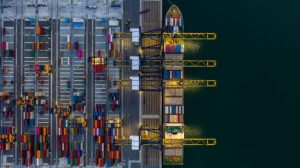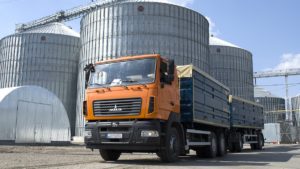
Transport enterprises of Ukraine (excluding the territory of the Autonomous Republic of Crimea and Sevastopol, as well as part of the Joint Forces Operation zone) reduced cargo transportation by 13.1% in January-March 2020 compared to January-March 2019, to 140.7 million tonnes, the State Statistics Service has reported.
According to its data, freight turnover of carriers for the specified period decreased by 14.9%, to 68.853 billion tonne-kilometers.
According to statistics, in the first quarter of 2020, 37.9 million tonnes of cargo were transported by rail in domestic traffic and for exports, which is 4.1% less than in January-March 2019. Some 43.7 million tonnes (17.9% down) were transported by road, 900,000 tonnes (12.6% less) by water, 22.2 million tonnes (27.6% less) by pipeline, and 20,000 tonnes (13.6% less) by airlines.

The enterprises and organizations of Ukraine in 2019 increased pretax profit from ordinary activities by 26%, to UAH 422.2 billion, the State Statistics Service has said.
According to the service, last year Ukrainian enterprises that worked profitably received UAH 596.3 billion in profit, which is 10.3% more than in 2018.
At the same time, 21.7% of enterprises worked with a negative financial result. Their losses in 2019 decreased by 15.3% compared to 2018, to UAH 174.1 billion.

The strategy for the privatization of state-owned enterprise (SOE) Ukrspyrt envisages the transfer of property of the SOE as a pool of fixed assets of industrial sites to the State Property Fund of Ukraine (SPF) before June 1, 2020.
According to the presentation of Ukrspyrt, the necessary conditions for privatization are the completion of the registration of property of state-owned distilleries.
Now out of 41 Ukrspyrt’s industrial sites, 18 have all the property registered, another 18 have partially registered property, and five have been seized.
The main advantage of this privatization option for Ukrspyrt is the ability to transfer facilities for privatization before June 1, 2020.

Ukraine’s transport enterprises in January-November 2019 carried 3.9 billion people, which was 5.6% less than in the same period in 2018, the State Statistics Service has reported.
According to the report, passenger turnover for the reporting period totaled 91.1 billion passenger-kilometers, which was 3.5% more than this figure for January-November last year.
In the 11 months of 2019, some 142.2 million passengers used rail transport (including the commuter rail service), which was 2.1% less than in January-November 2018, and 1.656 billion passengers were carried by road (5.4% less), the State Statistics Service said.
Airlines increased passenger transportation by 10.5%, to 12.8 million people.
In addition, according to the State Statistics Service, in January-November, 571.5 million passengers used trams (a decrease by 7.2% compared to the same period a year earlier), 652.9 million people used the subway (a 1.8% decline), and 864 million used trolleybuses (a 7.6% decrease).
Passenger transportation by water increased by 3.5% compared to January-November 2018, to 700,000 people.
The State Statistics Service says the report does not include data from the temporarily occupied territory of Crimea, Sevastopol and certain districts in Donetsk and Luhansk regions.

Transport enterprises of Ukraine increase cargo transportation by 9%
The transport enterprises of Ukraine in January-October 2019 increased cargo transportation by 8.8% compared to the same period in 2018, to 561.6 million tonnes, according to the State Statistics Service. According to its data, freight turnover of carriers for the specified period increased by 2.2%, to 282.3 billion tonne-kilometers.
According to statistical data, in January-October 2019 some 220.2 million tonnes of goods were transported by rail within the country and for export, which is 1.1% less than in January-October 2018.
Transportation of timber decreased by 59.4%, construction materials by 21%, scrap metal by 18%, coke by 9.3%, cement by 5.6%, coal by 4.2%, and ferrous metals by 3.4%.
At the same time, transportation of iron and manganese ore rose by 3.2%, oil and petroleum products by 0.1%, grain and cereal by 23.9%, chemical and mineral fertilizers by 32.9%.
In the total volume of cargo transportation by water, foreign traffic accounted for 41.5%. The volume of foreign cargo transportation decreased by 1.2%.
In January-October 2019, compared with January-October 2018, the volume of cargo transportation by pipelines increased. So, transportation of ammonia grew by 10.6%, gas by 0.6%. Ammonia transit was up by 11.1%, gas by 1.7%. Along with this, oil pumping and transit decreased by 1.9% and 4.3% respectively.